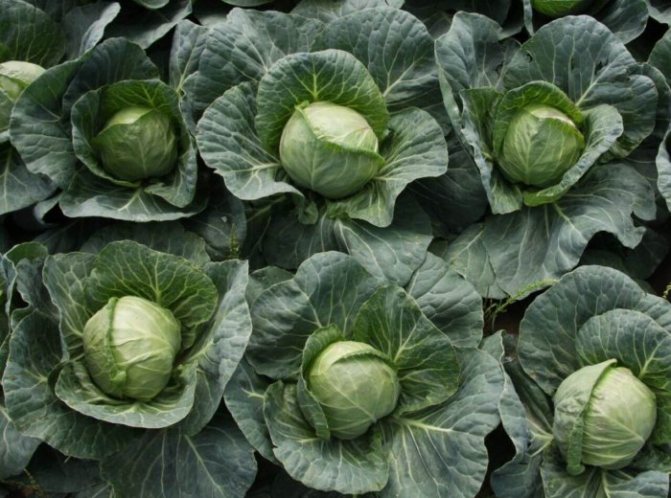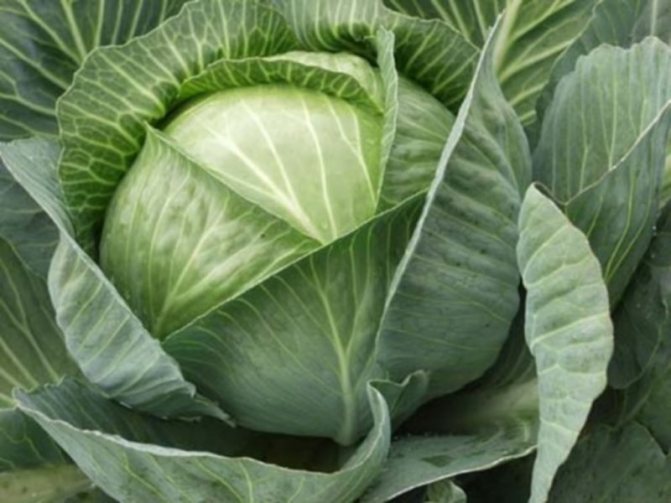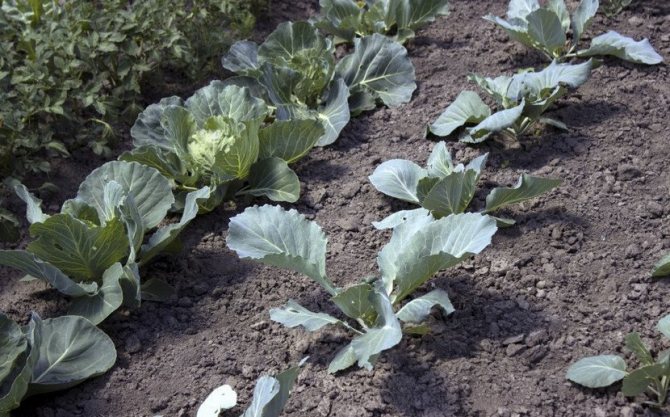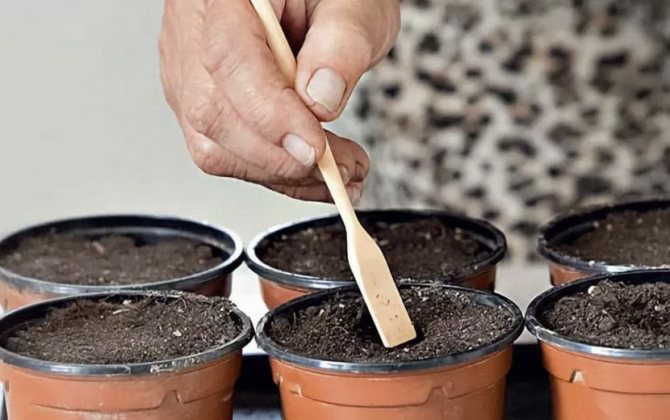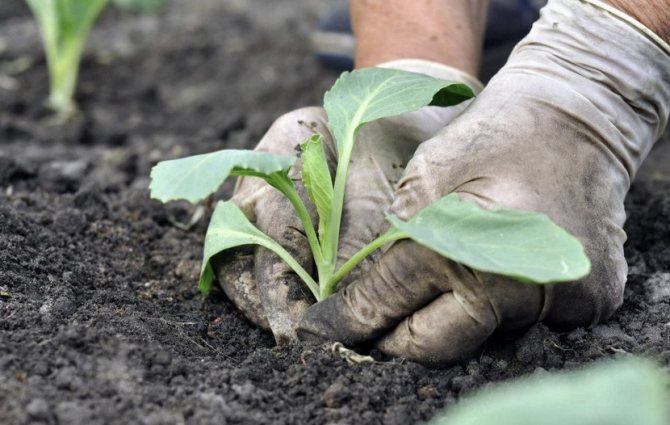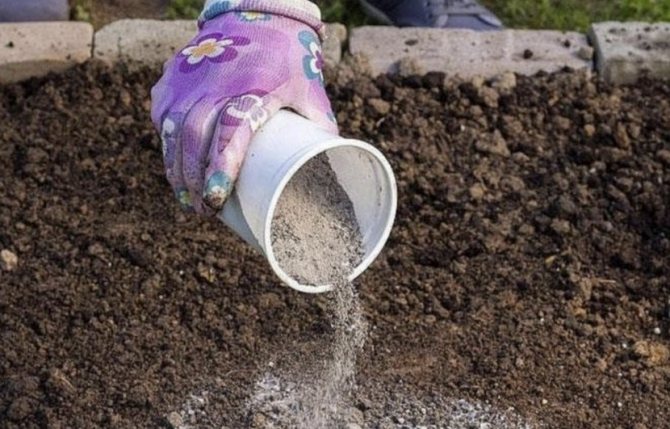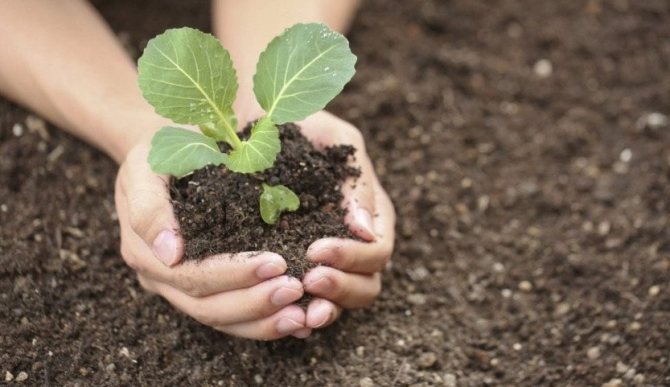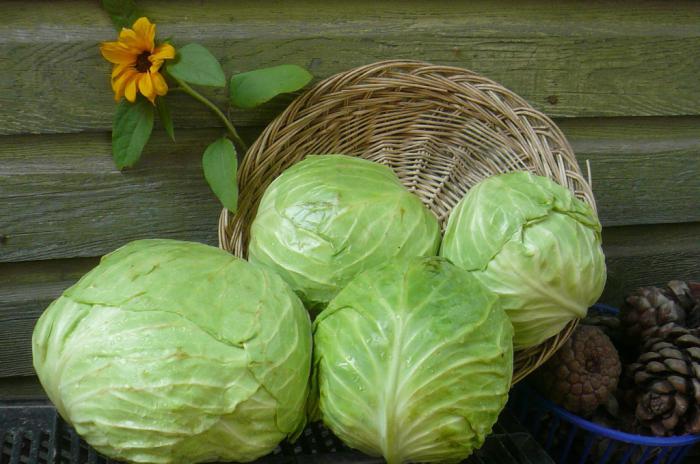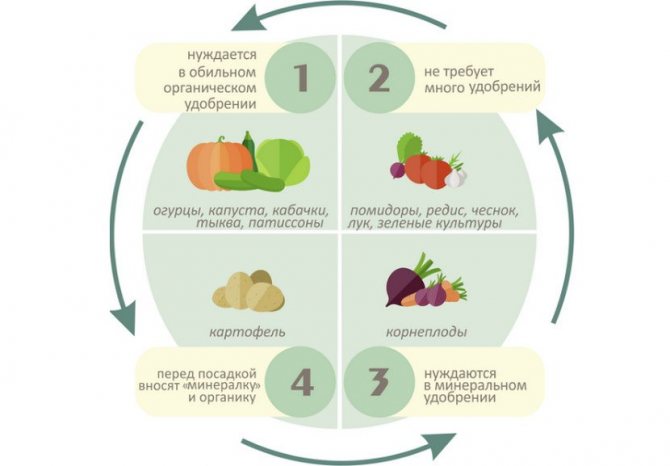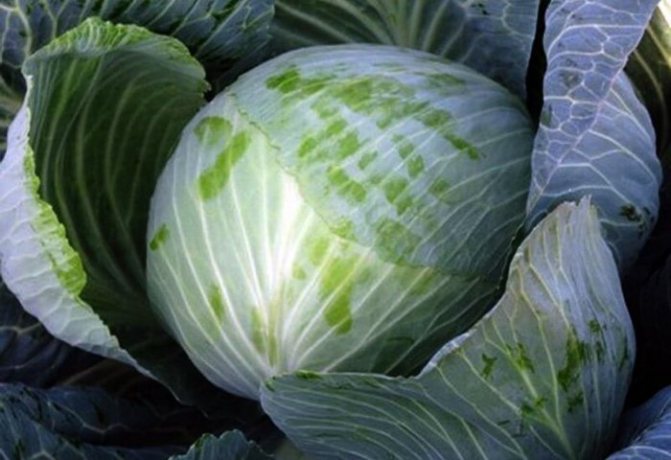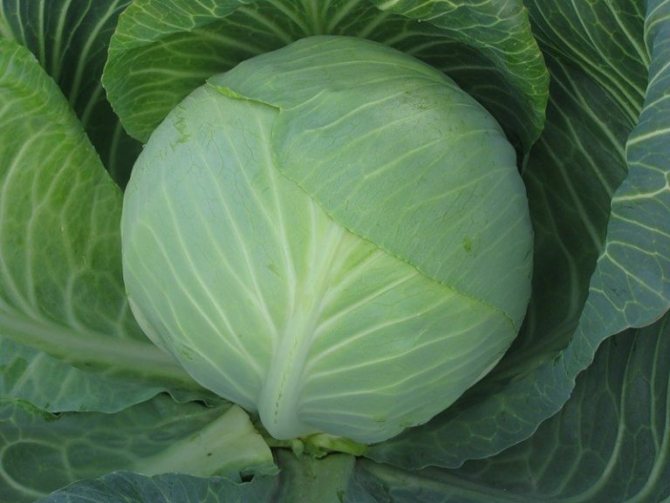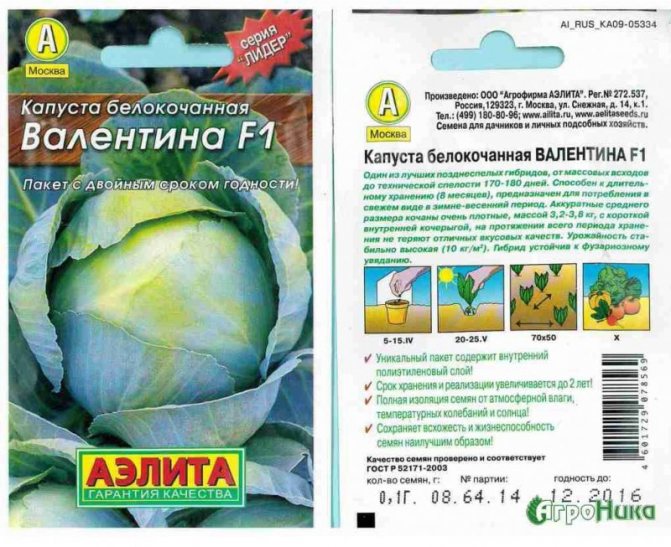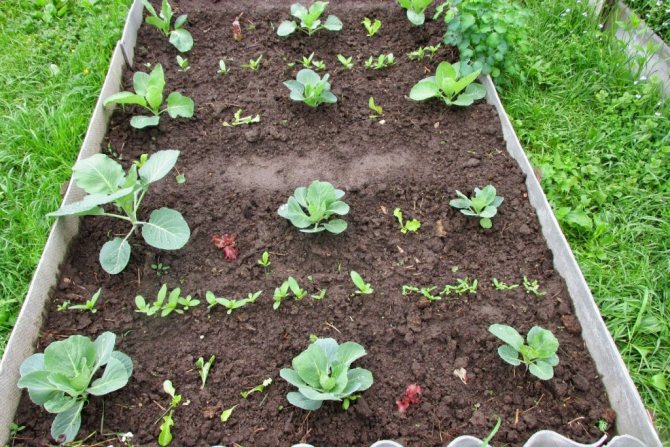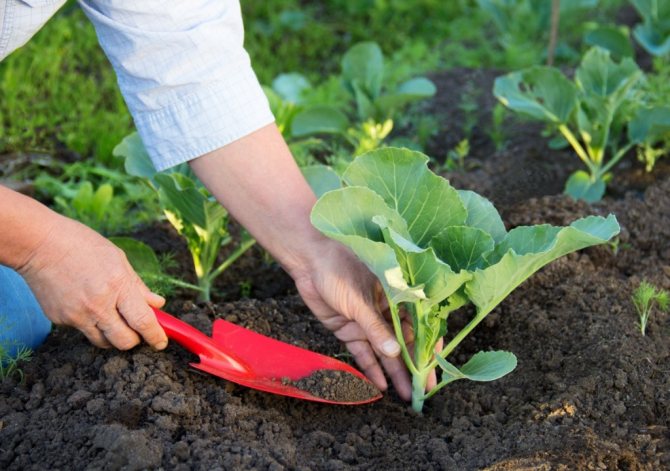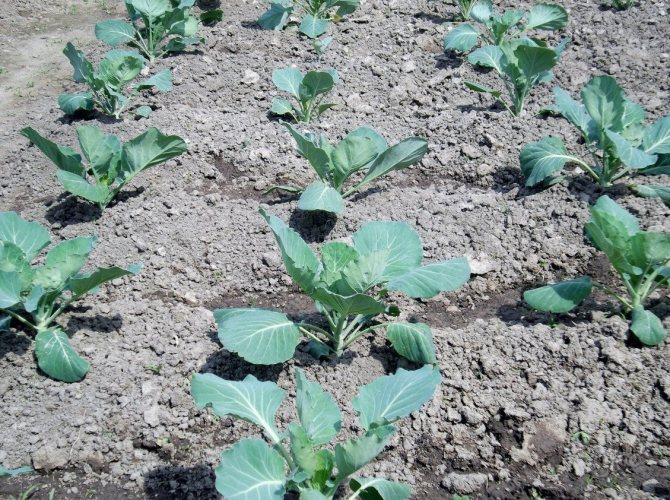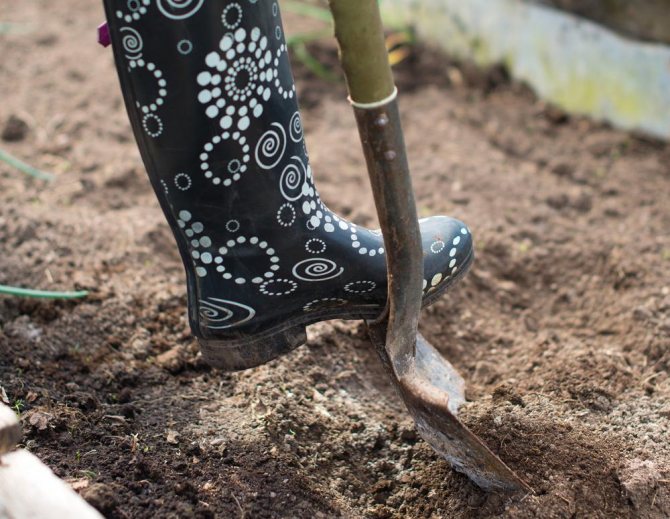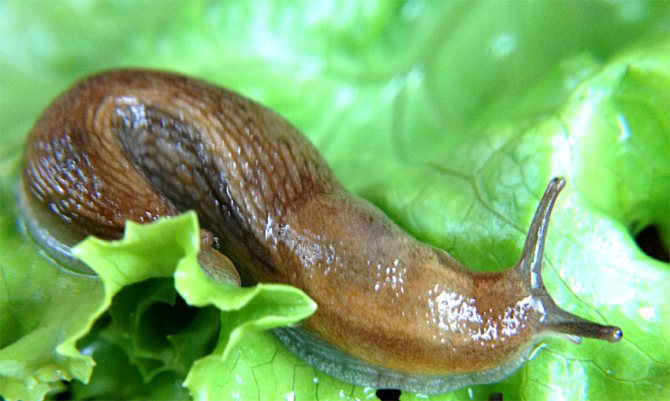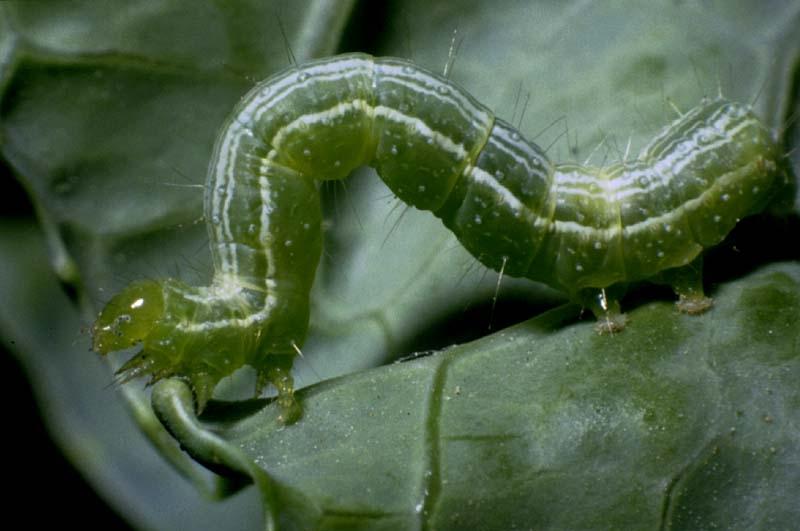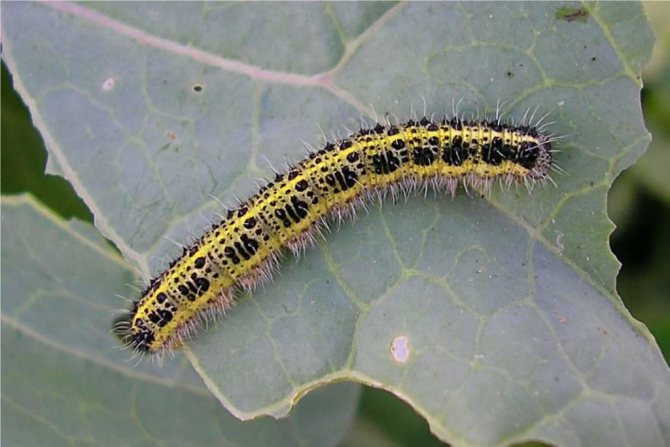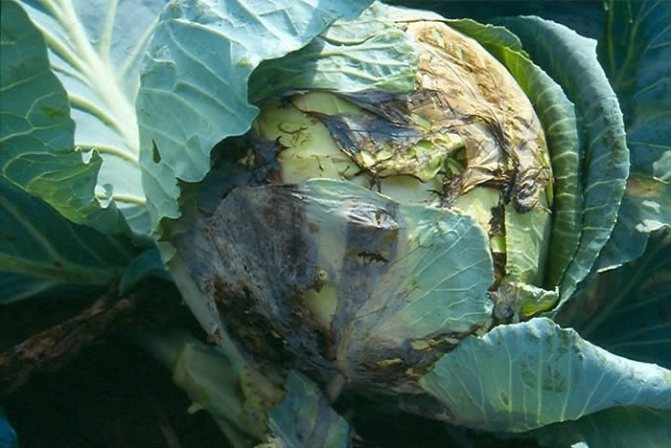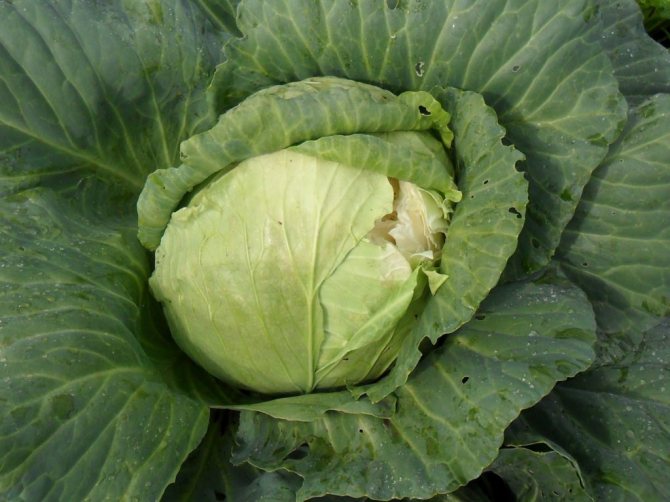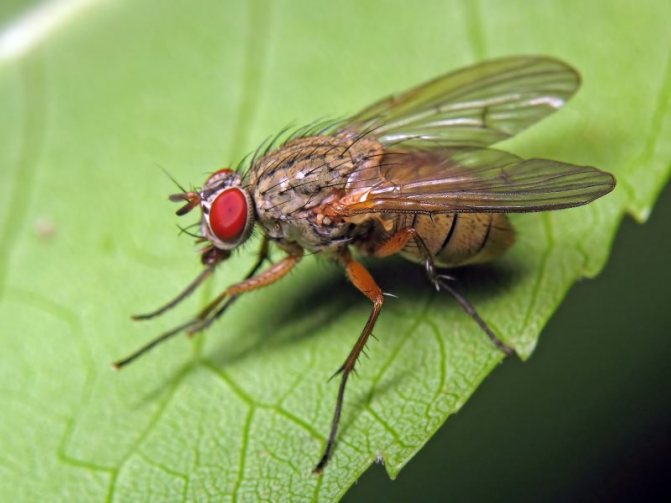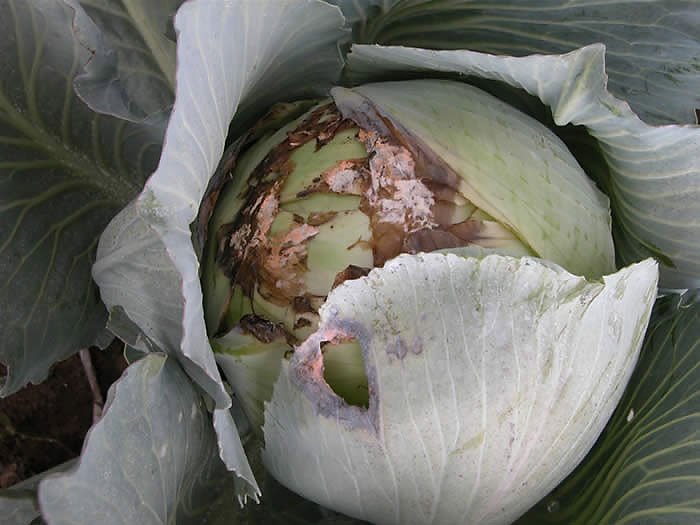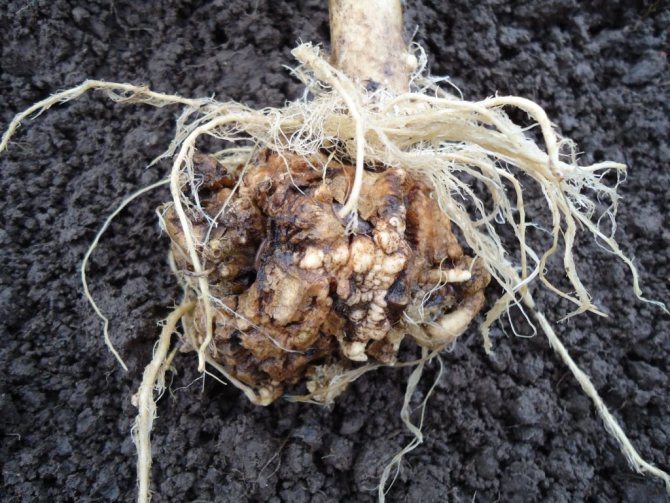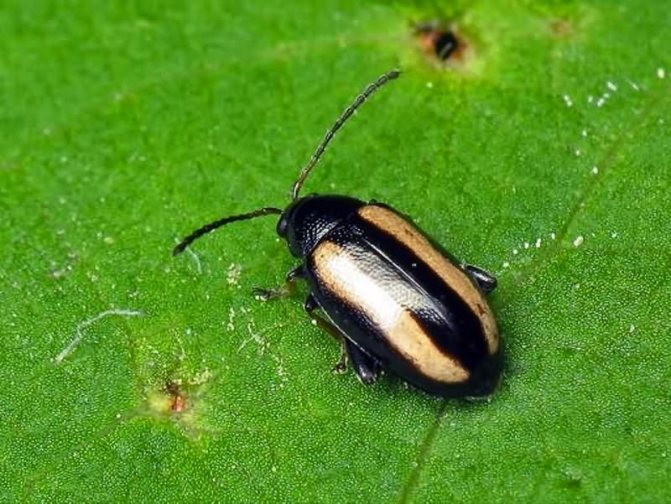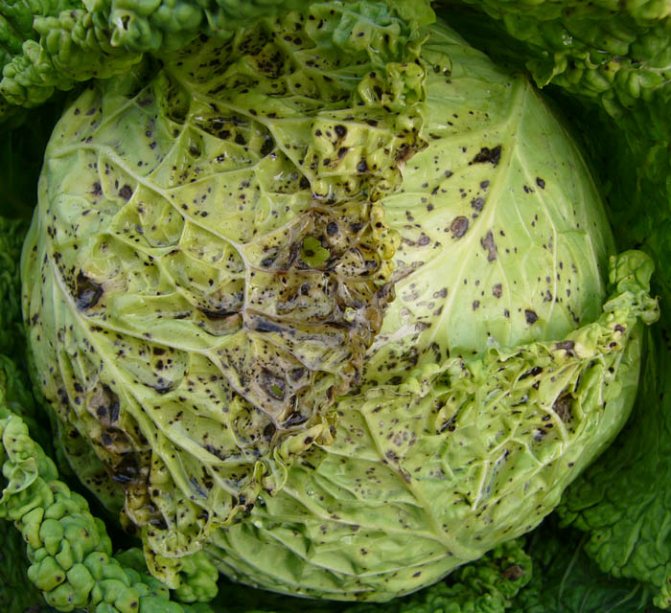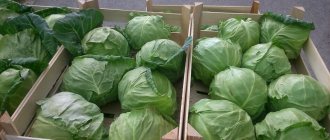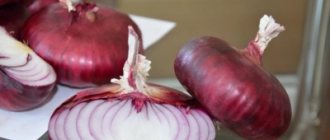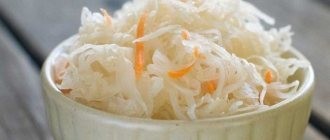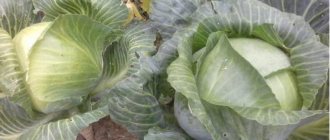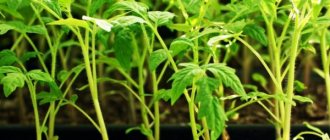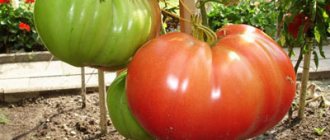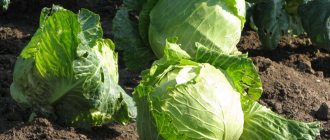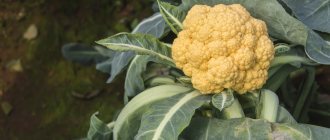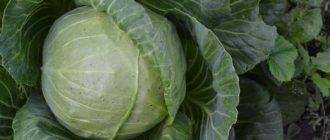Vegetable growing »Cabbage
0
1011
Article rating
White cabbage Valentine is a late hybrid that has gained popularity among gardeners in a short time. The variety was zoned in 2004 for the Central region of the Russian Federation.
Characteristics of the cabbage variety Valentine F1
The history of the creation of the variety
White cabbage Valentina F1 - a hybrid created at the Moscow breeding station. N. Timofeeva. In 2004, this variety was included in the State Register of Varieties of the Russian Federation in all regions of the country where there is agriculture. Valentina F1 has no analogues abroad in a number of properties and is one of the best representatives of domestic selection.
F1 - this designation indicates that the seeds are hybrid and obtained from artificial crossing of two different varieties of cabbage. Each variety must have one strong trait. The first has resistance to some kind of disease, the second has taste. The result is a new variety with these two characteristics. All work is carried out manually in a closed space. The unfolding flowers are pollinated with the harvested pollen. Therefore, hybrid seeds are much more expensive than conventional, varietal.
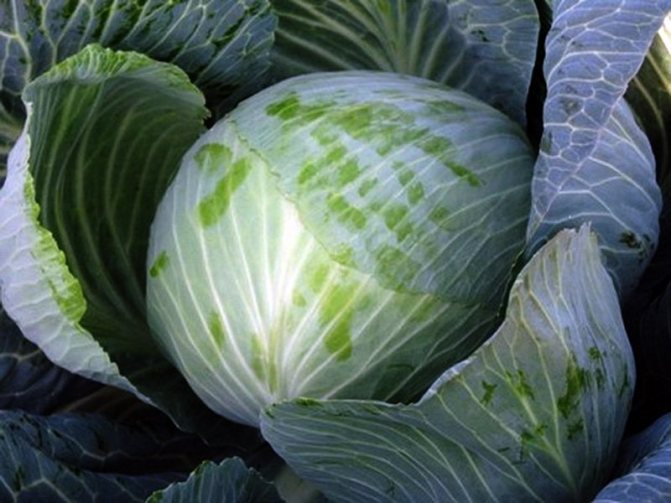
Cabbage Valentine F1 the tastier the longer it is stored
Sowing seeds for seedlings
Late variety forks are always grown through seedlings. But before starting planting work, you need to choose the right seeds. If they are purchased in a store from trusted suppliers, then such seeds do not need preliminary preparation, which includes the following steps:
- hardening;
- disinfection;
- warming up;
- soak.
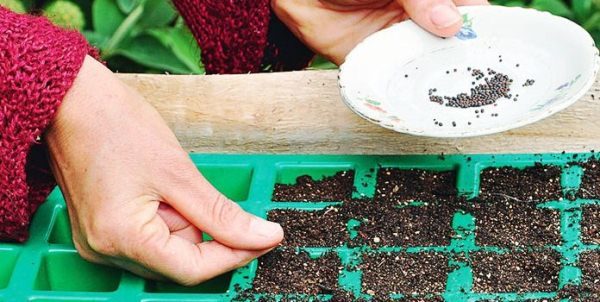

Cabbage seeds Valentine f1 are sown in a pre-prepared soil substrate
Most often, the shelf life of seeds is 3-4 years, during which the crop will retain all the varietal qualities of the hybrid.
The time of sowing seed for seedlings directly depends on the expected date of planting. Considering that it is planted in the ground at the beginning of June, the optimal time for sowing seeds is May 6, however, this can also be done in April.
The deadline for sowing seeds for cultivation is May 21, which is St. Nicholas Day.
After the seeds are selected, you need to prepare the land for sowing them. For these purposes, a loose and nutritious soil substrate is needed, the acidity index of which does not exceed 6 pH. You can purchase a ready-made earthen mixture in a specialized store, or you can prepare the substrate yourself:
- Mix equal parts humus and earth and for 5-6 kg of the mixture you need to add a glass of sand.
- Mix 1 part turf with 3 parts peat and for every 3-4 kg of the mixture add 1.5 cups of sand.
After the earthen substrate for sowing is ready, it is worth evenly distributing the seeds over the surface of the moistened soil. On top of the seeds, a 1 cm layer of prepared substrate should be poured, and then carefully watered from a spray bottle.
The container with the sown seeds is covered and placed in a dark but warm place with an air temperature of 15 ° C. In this case, one must not forget to control the emergence of seedlings, which hatch after 3-7 days. When the first shoots appear, it is worth taking the container with seedlings to a bright place so that the plants do not stretch out.
Read also: Why do pears rot and crack right on the tree? What to do about it?
Description of the characteristics of the cabbage Valentine F1
The variety is very late, from germination to full ripening takes from 140 to 180 days. It matures to stable frosts. Tolerates short-term freezing in case of sudden cold snap. Thawing does not harm further storage. Suitable for both amateur and farm cultivation. Valentina's head of cabbage is dense, flat-oval. Covered with dark green leaves with a bluish waxy coating. Weight 3-5 kg, average - 3.8 kg. The forks are white on the cut. It can be stored for up to 10 months. Cabbage initially has a bitter taste, which completely disappears during storage. The head of cabbage can be consumed after aging in storage for at least three months. During this time, it becomes tender, juicy and sweet, without coarse veins. The inner stalk of the head is short. Valentina is genetically resistant to fusarium wilt.
Table: the advantages and disadvantages of Valentine's cabbage F1
| Dignity | disadvantages |
| Yield | The need to buy Valentine F1 cabbage seeds annually, since the seeds of the hybrids do not repeat the maternal properties |
| Long shelf life (up to 10 months) | Valentina F1 cabbage must not be fermented immediately after harvest. For fermentation, it must be kept in the cellar for at least three months for the disappearance of bitterness |
| Excellent taste, no hard inclusions in the leaves | |
| Small stump | |
| Fusarium wilt resistance | |
| Frost resistant |
Harvest
Fully ripe, with dense heads of cabbage, Valentine's cabbage can be stored in the cellar for more than 7 months. Taking the cabbage out of storage next spring and even in summer, gardeners are surprised that the cabbage is juicy and sweet, as if it had just been removed from the garden. This variety is good fresh for salads; Valentina makes excellent cabbage soup, cabbage rolls and other dishes. Cabbage can be fermented in autumn, cut off unripe for summer consumption. Crop for winter storage is harvested in dry, sunny weather, without waiting for frost. Heads of cabbage battered by frost will thaw and restore their appearance, but they will not lie for more than two months, they will begin to rot. It is better to use them for processing (fermentation, cooking).
The cabbage is dug up by the roots, the earth is shaken off, the lower leaves are cut off and laid out to dry for 2-3 days, for example, on a veranda, in a barn, under a canopy, in a garage. The stump can be trimmed or left hanging for storage. But the most reliable way is to wrap each forks in cling film and put them on shelves, baskets, boxes, etc. in the cellar. Instead of a film, you can use newspapers or wrapping paper. Ideal winter storage conditions: cold -1 ... + 2 ° C and high humidity - 90–98%.
Video: storing cabbage in cling film
Features of planting and growing vegetables
It is important to choose the right place for growing cabbage. This culture is very susceptible to external conditions, so you should carefully read all the nuances of planting the selected vegetable.
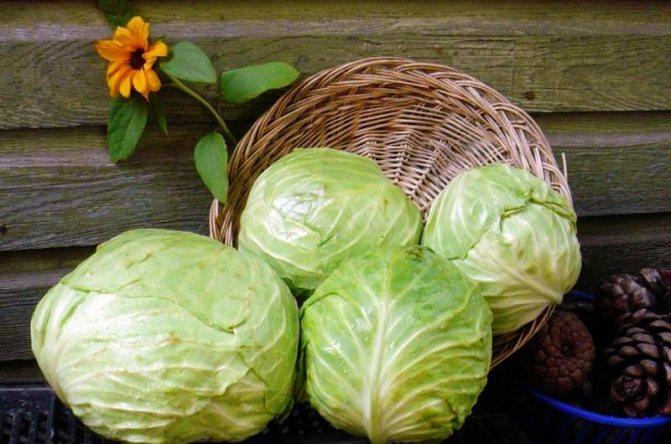

Valentine F1 cabbage becomes sweet and juicy after a few months of storage
Choosing a place for cabbage beds
When choosing a place for cabbage beds, you need to consider several factors:
- Illumination: cabbage does not like shade, the sun should illuminate the plant throughout the day;
- Crop rotation: you cannot plant cabbage in one place for several years in a row.
It is not recommended to arrange cabbage beds in the place where other cruciferous plants grew as a siderat. The best precursors of cabbage are potatoes, cucumbers, tomatoes, and onions. And if you plant cabbage in the aisles of potatoes, pests will bypass it.
Soil preparation
Cabbage grows well on loose, moist, fertile and neutral or slightly alkaline soil. Therefore, the beds must be prepared in advance.If the soil is heavy and acidic, 1-2 glasses of ordinary chalk or dolomite flour per 1 m2 are added for digging. Add over a bucket of humus or compost. Fresh manure cannot be applied... The garden bed is then dug on a shovel bayonet, removing weed roots and pest larvae. Then it is covered with a dark agrospan before planting seeds or seedlings. The soil in the greenhouse is prepared according to the same rules, adding also furnace ash at the rate of 1 liter per 1 m2.
The bayonet of a shovel is a unit of measure for depth, equal to about 25 cm. This term is used when it is necessary to designate the tillage of the soil by the depth of full burial of the shovel, i.e. 22-25 cm.
Video: soil preparation for sowing cabbage
Preparation of planting material
If the seeds are not coated with disinfectants and nutrients by the manufacturer, they must be disinfected. To do this, the grains are placed in a gauze bag and heated in hot (53 ° C) water for 10-15 minutes. This is best done in a thermos. After this procedure, the seeds are dried so that they do not stick together, and are sown immediately.
Sowing cabbage and growing seedlings
In a warm room, the seeds will sprout much faster, but the seedlings will immediately begin to stretch, so cabbage seedlings are not grown in a warm place. Plants develop best at 15-18 ° C... Therefore, it is recommended to sow seeds in an unheated greenhouse or under cover in early to mid April or early May, depending on the region. Grains are arranged in rows. The distance between plants is 1.5–2 cm. The same gaps are left between the grooves. The sowing depth is 1–1.5 cm.
As soon as the first true leaf begins to develop in the seedlings, the plants are seated in separate containers or dive in the garden, but with a distance of 10–20 cm between them. It is recommended to shorten the roots by a third of their length. The seedlings are planted in a permanent place after 40–45 days, when the cabbage has at least 4–6 leaves.
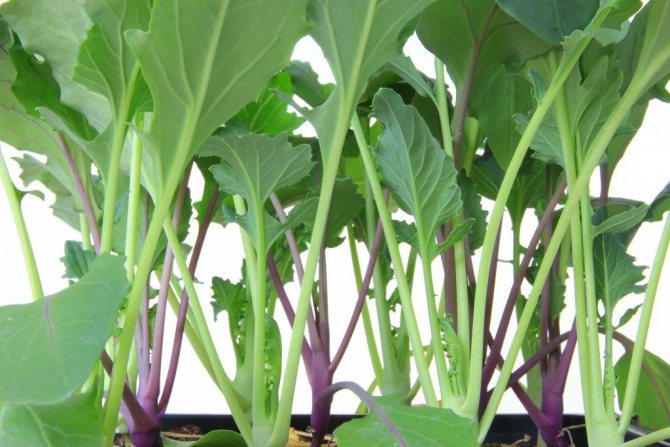

Cabbage seedlings at the age of 40-45 days are ready for transplanting
Transplanting
Cabbage seedlings are planted according to a certain scheme, given that the plants need sufficient light and space. Therefore, the distances between plants in late cabbage are made more than in early and medium late cabbage. The holes are dug 70 cm apart. 70 cm is also left between the rows.
Planting is carried out on a cloudy day or in the evening, so that the seedlings do not fade in the sun, and acclimatize a little overnight. When planting in the hole, add 2 tablespoons of ash and a handful of humus.
- Seedlings are carefully removed from the container in which they grew, trying not to damage the roots.
- Placed in the hole so that the roots do not bend up.
- The first true leaves fall asleep, and the cotyledons remain in the ground. You do not need to delete them.
- A small hole is formed around each seedling with your hands.
- Water abundantly.
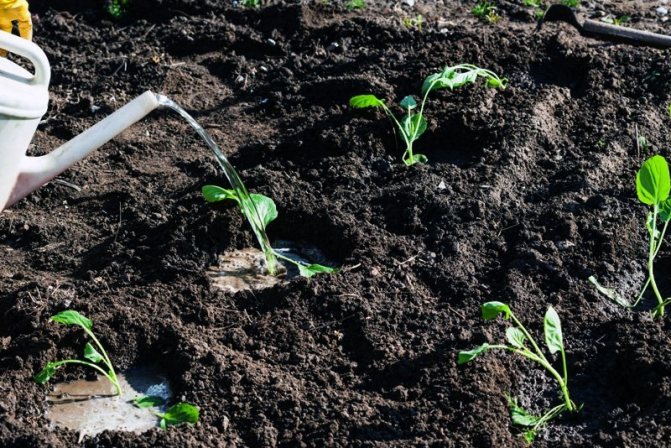

The seedlings are buried to the first true leaves and watered abundantly
With seeds, cabbage Valentina F1 is planted on the garden bed in the second half of May under a cover with non-woven material, and in frost they are also covered with a film on top. The seeds are buried 1.5–2 cm in the soil. Place 2-3 seeds in one well. After germination, 1 strongest plant is left, the rest are carefully cut with scissors so as not to damage the roots of the remaining seedling.
Thin agrospan can not be removed from the cabbage during the entire growing season, opening only for the time of weeding, loosening and hilling. You can water directly on the surface of the material. This will protect the plant from insect damage.
What are the disadvantages and advantages of a hybrid?
Valentina has few shortcomings, but she does. So, for example, the promised high yield can be obtained only under favorable conditions, which can certainly only be hoped for in a greenhouse.
In particular, Valentine cabbage is demanding on the temperature regime.If the mercury column of the thermometer drops below 15 degrees Celsius during the formation of heads of cabbage, then there is a high probability that the growth of plants will stop. In the opposite case - when the air temperature is about 30 degrees and above - Valentine's cabbage is able to go into the leaves altogether, forgetting about tying the heads.
Late cabbage Sugarloaf is a true Siberian!
The favorite growing region for the Sugar Loaf is Western Siberia. The cabbage grows large, dense and very sweet. More about the variety ...
The hybrid makes no less claims to proper watering. In regions with high humidity, gardeners noted that Valentine's cabbage forms small heads with thick leaves, does not gain its commercial appeal. In addition, loose heads of cabbage are worse stored. Drought also has a negative effect, from which the South of Russia often suffers. With a prolonged lack of moisture, growth is inhibited, and this, in view of the length of the growing season of the hybrid, is akin to a loss of yield.
If we talk about the pros, there are undoubtedly a lot of them:
- Excellent keeping quality. If you manage to grow a good harvest, it will remain without problems for six months or more.
- Excellent transportability. Industrial producers noted that even when transporting Valentine's cabbage over long distances, the forks do not lose their attractiveness.
- Amazing taste, which not only does not deteriorate during storage, but also multiplies.
- Moderate resistance to disease and cracking. Valentine's cabbage is immune to all known diseases. Plants are especially resistant to fusarium.
- Doesn't require a lot of planting space. The compact raised rosette with small leaves allows you to grow cabbage in a 60x60 cm pattern.
- Does not need hilling. An external stump of medium size allows you to forget about adding soil under the stem during weeding.
- Presentable appearance. The dense heads of medium size have a whitish tint in the cut, which attracts buyers.
- Frost resistance. The grown forks are not afraid of frosts up to minus five. On the contrary, when harvesting after the first night cold snaps, Valentine's cabbage only becomes sweeter.
Cabbage bed care
Cabbage care includes:
- weeding,
- loosening the soil and hilling,
- watering,
- top dressing.
The soil around the growing cabbage must be loosened and free of weeds. To strengthen the root system, it is useful to huddle the plants by shoveling the soil along the lower leaves. To prevent crust formation, cabbage beds are sprinkled with chopped mowed grass. This mulch not only protects the soil from drying out, but also provides additional nutrition to the plants.
Video: some tricks of growing cabbage
Watering
Cabbage is a moisture-loving plant. Therefore, it needs to be watered often, in the heat every day, especially during the period of leaf growth and laying of heads. Water for irrigation must be clean and cool, but not lower than 12 ° C. Sprinkling is best suited for cabbage. Especially in hot weather, which this plant does not tolerate. Already at temperatures above +25 ° C, cabbage stops tying the head of cabbage. A cool shower during hot times of the day will help solve this problem. But you cannot use sprinkling while tying the fork. Water constantly getting between the leaves can cause various rot. Stagnation of water at the roots is also not recommended. The soil should be moist but loose. After tying and pouring a fork, watering should be limited, but not stopped if the weather is dry.
Table: dressings for cabbage varieties Valentine F1
| Regularity | The composition of the dressing in proportion with water |
| Weekly, immediately after watering, alternating formulations | Organic feeding:
|
| Once every two weeks, between organic feedings | Mineral dressing:
|
If fresh manure is added to the hole when planting cabbage, the cabbage will grow large, fleshy leaves, but the head of cabbage will not tie at all.
Some features of caring for Valentine F1 cabbage
- So that the heads of cabbage do not crack from waterlogging, you need to weaken the flow of juices from the roots to the leaves of the fork. To do this, the roots are chopped up with a shovel or the head of cabbage is slightly rolled in the ground, until the characteristic crunch of burst roots;
- The lower leaves of the cabbage are not cut off, only yellowed, dried leaves are removed, which fall off themselves;
- To prevent the formation of layers of dry or wet darkened leaves, the so-called cuffs, inside the fork, it is impossible to separate the head of cabbage from the roots during harvesting during freezing, when the leaves are frozen. You need to wait for warming or dig up the plant with roots and place it in a cool place until the head of cabbage has completely thawed.
Planting
Late varieties are sown in late March and early April. Seeds are immersed in a greenhouse or box to a depth of 1 cm, and then watered and set in a warm place. Shoots appear in about a week. This is also the Valentine F1 cabbage. Reviews say that the seeds have a germination rate of about 100%. In the cotyledon phase, they are dived into other dishes. Plants with four true leaves are planted in a permanent place at the end of May, 40 days after sowing. They are placed on the garden bed according to the 60 × 60 scheme. Landing according to the scheme 70 × 50 is allowed. They are immersed in the ground to the first true leaf. Then the Valentine F1 cabbage will quickly take root in a new place.


Reviews of some gardeners are advised to sow cabbage in a permanent place in the holes, covering, if necessary, with film or agrofibre from frost. Several seeds are laid. Then the extra (if any) dive into other holes. Reviews claim that plants that have not been transplanted need less watering. But other gardeners say that when diving, part of the root comes off, causing it to grow in width, and not in depth. This contributes to the formation of a larger head of cabbage.
Cabbage is a plant that needs regular watering. It is especially necessary to actively replenish the moisture reserve during the formation of the head of cabbage. The area where the cabbage grows is regularly weeded and loosened to improve aeration. Sprinkle ash over the soil to prevent aphids and cabbage fleas.
Read also: Cherry gift to Stepanov, variety features, reviews and care rules
The first time feeding is carried out after the appearance of the second true leaf. Next time - a couple of days before disembarking to a permanent place.
Possible diseases and pests
Despite the fact that the Valentina F1 variety is very resistant to fusarium wilt, it is still susceptible to attack by pests and diseases, like any other crop.
Table: Cabbage diseases Valentine F1
| Disease | Symptoms | Prevention and treatment |
| Keela cabbage | The roots of the plant are deformed, covered with growths, and cease to perform their function. The plant dies |
|
| Vascular bacteriosis | The leaves are first covered with yellow spots, and then dry out and turn black | Carry out pre-sowing seed treatment: warming up in hot (53 ° C) water for 15–20 minutes |
| Powdery mildew | Gray, flour-like coating on the back of the leaf. From above, the sheet becomes covered with yellow spots and dries | Treat the soil before planting plants with Phytosporin M (2 tablespoons of concentrate per 10 liters of water) |
| Alternaria or black spot | Dark round spots with concentric circles inside on the leaves, which soon turn black. The inside of the head of cabbage is also affected during storage. |
|
| Gray rot | It appears at the end of summer with high humidity. On the petioles of the lower leaves of cabbage, at the point of attachment to the stalk, rotting spots with an unpleasant odor appear, spreading to the entire head of cabbage. It manifests itself during storage, especially if it is warm and damp in the basement or cellar | |
| Rhizoctonia | Rot appearing at the place of attachment of the head of cabbage spreads to the stump, which deteriorates during storage. Gradually, the entire head of cabbage rots from the inside |
Photo gallery: cabbage diseases
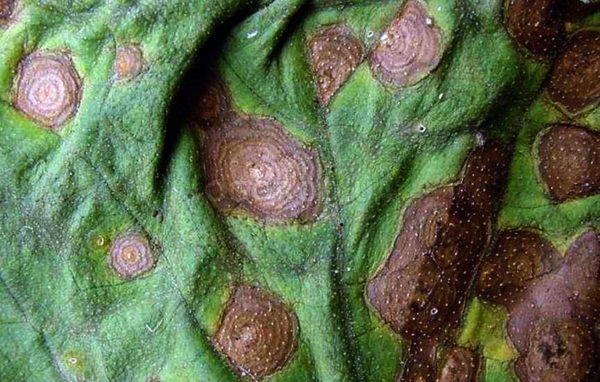

In case of Alternaria disease, spots with conical circles inside are formed on the leaves.
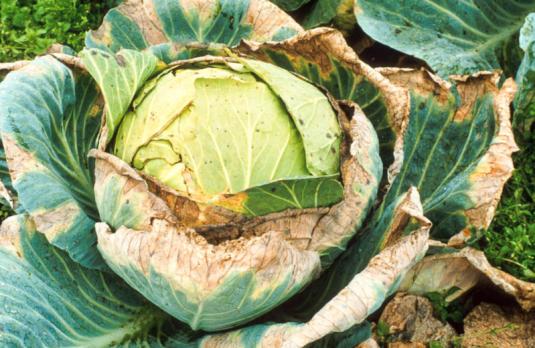

Vascular bacteriosis affects heads of cabbage at high temperatures and high air humidity
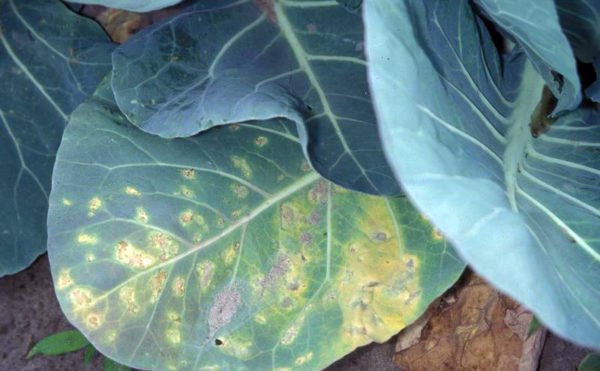

Leaves infected with powdery mildew dry out quickly
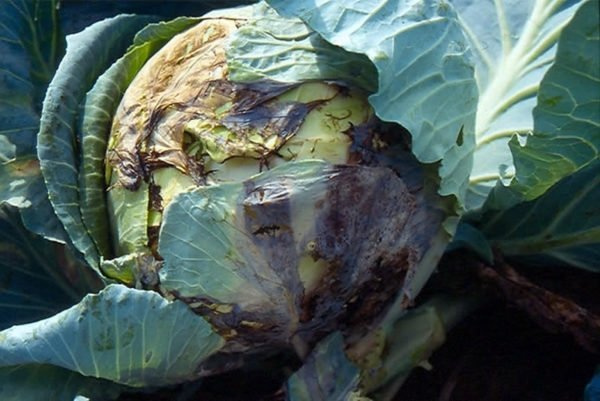

Heads of cabbage affected by Rhizoctonia cannot be saved
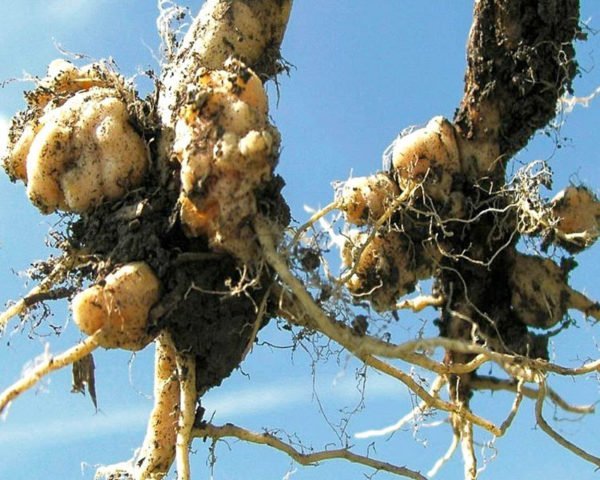

Keel-infested roots cannot feed the plant
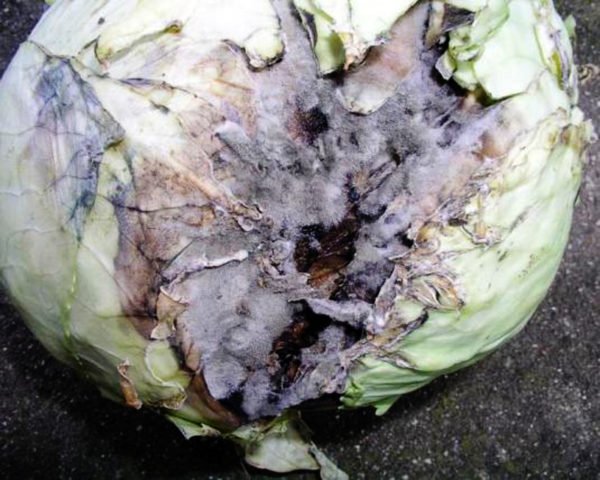

Gray rot can destroy all crops
Valentina F1 cabbage is quite resistant to all types of pathogens. If you adhere to the rules when growing and take preventive measures, it will not hurt.
Table: cabbage pests
| Pest | Damage caused | Control measures |
| Cabbage aphid | It settles in colonies on the leaves and sucks the juices from the plant. The head of cabbage is not formed, the plant dies |
|
| Cruciferous flea | Jumping bugs that feed on cabbage leaves, gnawing small holes in them. | |
| Cabbage white | A butterfly caterpillar that feeds on green cabbage leaves. Causes irreparable damage to plants | |
| Cabbage moth | Caterpillars of this inconspicuous butterfly gnaw holes in cabbage leaves, from which the heads of cabbage quickly begin to deteriorate and are not able to be stored normally. | |
| Cabbage scoop caterpillar | Spoils heads of cabbage, gnawing holes in them and clogging them with excrement | |
| Cabbage fly | Lays eggs in the soil next to the stem. The hatched larvae penetrate it, gnaw through the passages and destroy the plant | |
| Slugs | They feed on green leaves of plants, are active at night, can destroy the entire crop |
|
Photo gallery: insects on cabbage
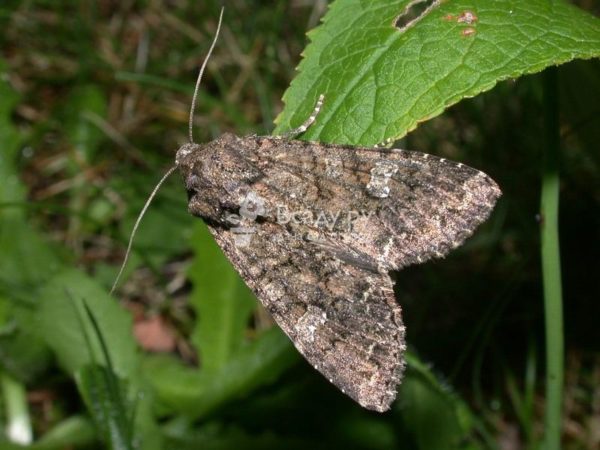

Moth cabbage scoop
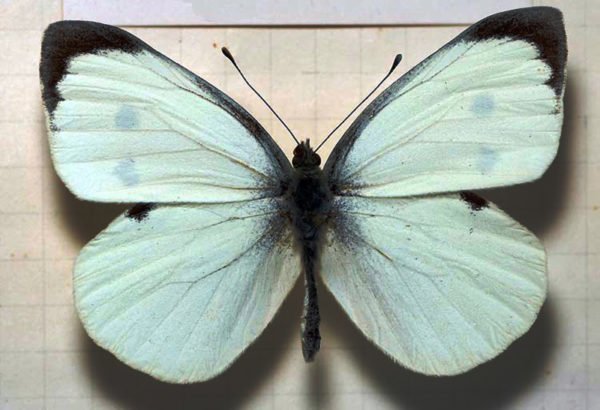

The white butterfly looks completely harmless, unlike its caterpillars.
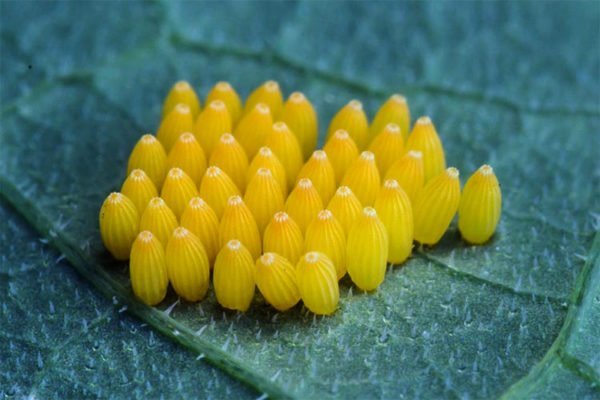

The clutch of white butterfly eggs is located on the back of the cabbage leaf
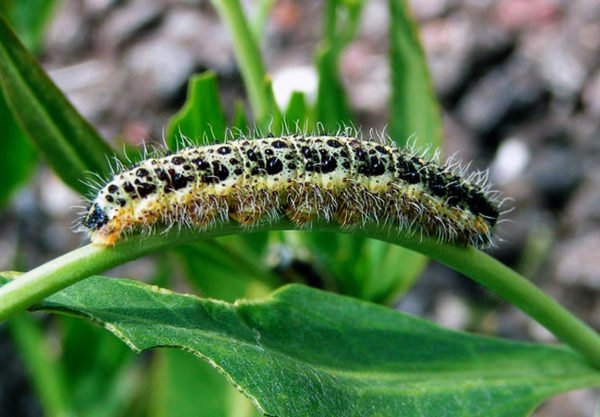

The caterpillar of the whitebird butterfly emits a sticky poisonous substance, thanks to which it is very difficult to shake it off the plant.
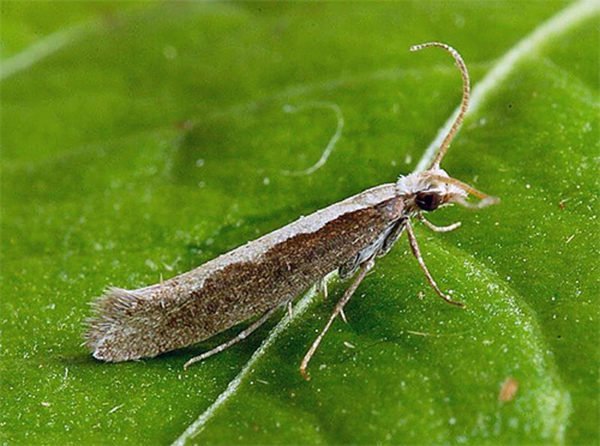

Inconspicuous gray butterfly - cabbage moth
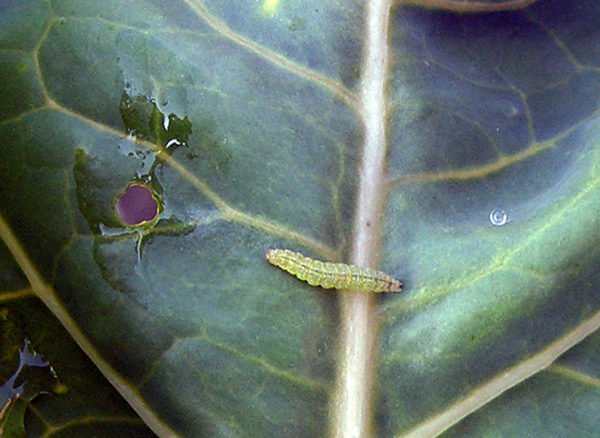

The larva of the cabbage moth gnaws oval holes in the leaves
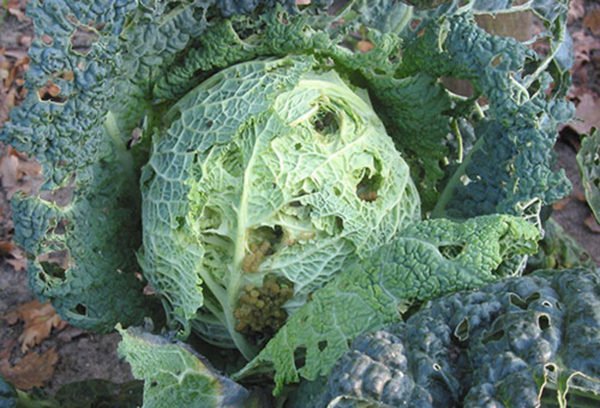

The caterpillars of the cabbage scoop gnaw holes in the heads of cabbage and pollute the entire space with their excrement
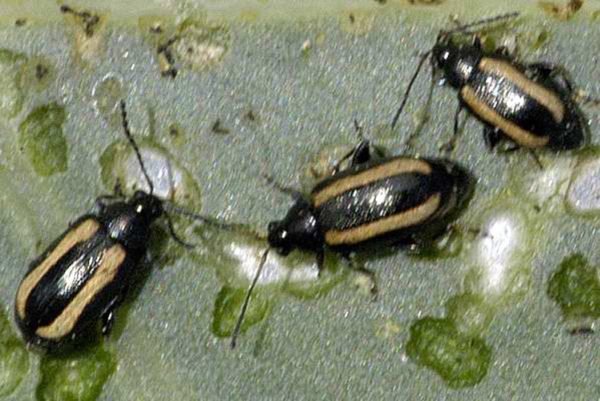

Cruciferous fleas transform cabbage leaves into lace
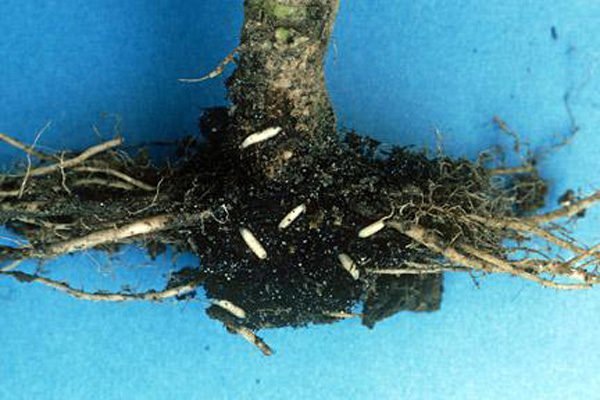

Cabbage fly larvae settled on the roots of the plant
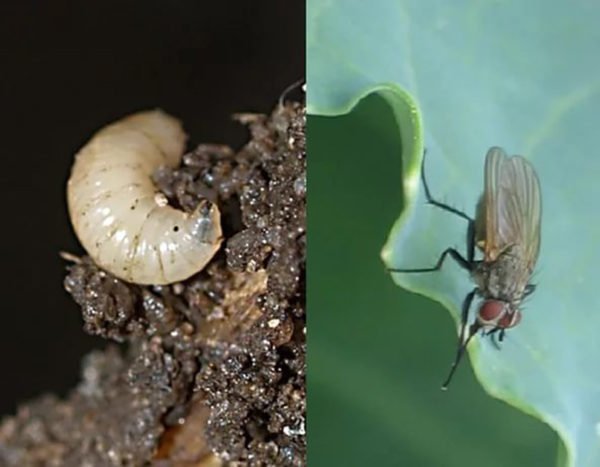

Cabbage fly larvae settle at the root collar of the plant and bite into the stem, making spiral passages in it
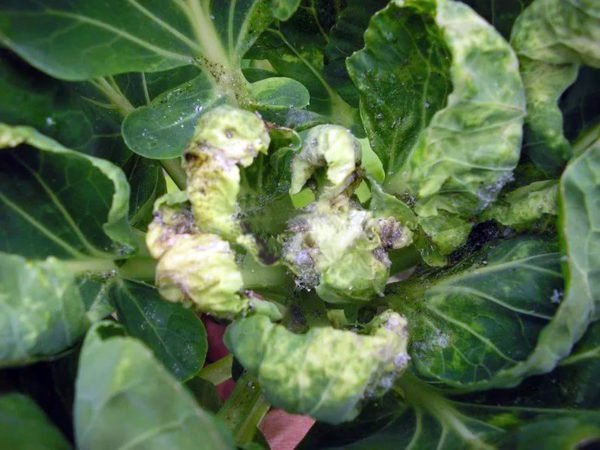

Cabbage leaves, inhabited by a colony of aphids, curl, the plant dies
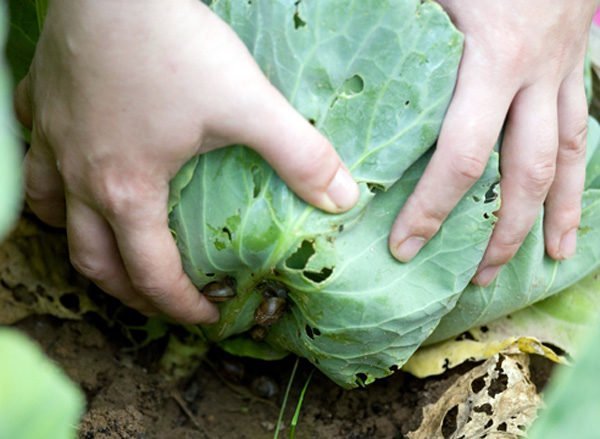

Slugs, gnawing holes in heads of cabbage, make them completely unusable.
Video: fighting gnats and slugs, as well as caring for cabbage
Collection and storage of cabbages
The Valentine F1 cabbage is harvested from mid-October until the start of regular frosts. Although small frosts down to -7 ° C are not terrible for Valentina. At this time, there are many bitter substances in it. It is undesirable to use heads of cabbage for food right away. The bitterness will disappear in two or three months. It will be possible to ferment this cabbage only in January. Before that, it is removed to the cellar or basement for storage. To do this, leave 2-3 cover leaves on the heads of cabbage and dig up the cabbage with the root. Store in a cellar, hanging by the rhizome. To prevent the cabbage from spoiling, sprinkle with chalk. The heads of cabbage should not touch each other during storage. During the winter, they need to be examined several times, choosing the spoiled ones. Cabbage is stored at temperatures from zero to two degrees Celsius.
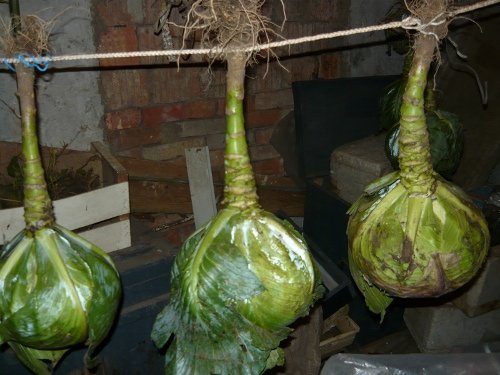

Valentine's F1 cabbage, suspended by the root, can be stored until next summer
Reviews of gardeners
Among the reviews about Valentine's cabbage, there are often both positive and negative ones. Moreover, both those who are engaged in mass commercial production and those who grow vegetables on a personal plot for their family cannot agree on whether this hybrid is worth cultivating every year or should we look for another. Judge for yourself, and also, please share your own opinion and experience about growing this cabbage in the comments.
Olga, Tomsk Region Seeds of this cabbage saw at an agricultural fair. The seller praised the culture very much and promised a frantic harvest with a minimum of maintenance. The cabbage has risen well, I can't say anything. But the harvest ... It leaves much to be desired. The heads grew small - 1-1.5 kg in weight, but rather dense. At the same time, Valentine's cabbage grew on my windowsill for a month and a half, it was well lit and fed by Atlanta for the strength of the sprouts. She planted seedlings in early June, strong and healthy, and then she froze in the ground. She responded very badly to both watering and feeding. I think, nevertheless, this variety is not in any way for our area. Probably, the southerners are more satisfied with it, but we'd better choose something else.
Valentina, Rostov-on-Don I have been planting my namesake for 4 years in a row. Always a good harvest. Some heads of cabbage weigh more than five kilograms. But mostly a little over three kilos. It suits me. Stored for a long time. Our cellar is shallow, sometimes it freezes in winter, and so this cabbage remarkably leaves after freezing and remains just as tasty. The only negative is that I don't like it in salting. I salt without carrots, and therefore the yellowish color of pickles is not to my liking.
Vitaly Borisovich, Cherkasy region A good hybrid for our area. You just need to create drip irrigation for it and sometimes, most often in July, turn on the rain installation to bring down the heat from the plants. I never add top dressing for this cabbage, but in the fall I must plow it with humus, and when planting I add a tablespoon of wood ash and a pinch of baking soda to the holes, then spill it with water and wait for it to be absorbed. I do not add anything else, and the harvest is the richest. Up to 10 kg from 1 square meter is obtained.
Rustem, Dagestan Valentina is not the best cabbage for farming. Yes, it is delicious, has a long shelf life and looks great. But you need to monitor it very closely: water it on time, remove weeds. I missed a day or two and that's it, the yield is declining. We tried to grow it 2 times, we will no longer.


Cabbage Valentine reviews, photos, description of the variety, characteristics of fruits and yield which are presented in this article, was bred in 2004 and quickly became popular among Russian gardeners. Cabbage variety Valentine late ripening, has an excellent taste, has a long shelf life and is suitable for fermentation. In this article, we will describe advantages and disadvantages of the variety, as well as cultivation features valentine cabbage.


